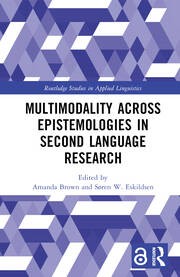How Flexible Seating Redefines the Place of the Body in the Language Classroom
Chapter 5: How Flexible Seating Redefines the Place of the Body in the Language Classroom, Marion Tellier - Projet AFLEX
Edited By Amanda Brown, Søren W. Eskildsen
This collection highlights diverse epistemological perspectives in original research on the important role of multimodality in second language contexts.
The volume explores a wide range of theoretical and methodological traditions toward foregrounding the notion that bodily action is not merely an add-on to the modality of talk but an integral part of second language teaching, learning, and interaction. Following an introductory chapter, 18 empirical chapters feature either classroom or non-classroom research, which shed light on different dimensions of multimodality in second language contexts, including learning reflected in gesture, learning gesture across languages, the role of bodily action in language teaching, and the role of movement in configuring space for effective communication. Each empirical chapter follows a consistent structure detailing the research focus, the background to each study, methodology, and findings. A concluding synthesis chapter braids the insights of these chapters, drawing parallels across different methods, and pointing toward crosscutting areas for future research.
This book will be of interest to students and scholars in applied linguistics, multilingualism, bilingualism, gesture studies, cognitive science, and psychology.
Citer
- Marion Tellier. How flexible seating redefines the place of the body in the language classroom. Amanda Brown; Søren Wind Eskildsen. Multimodality across Epistemologies in Second Language Research, Routledge, pp.72-87, In press. ⟨hal-04442051⟩
